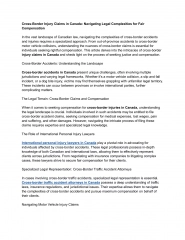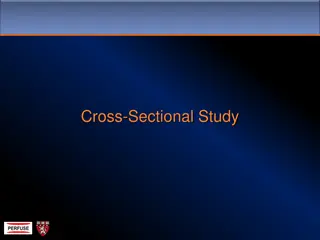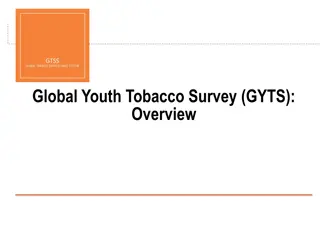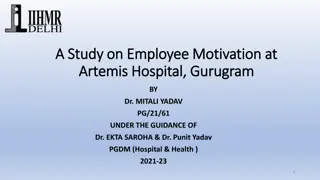Introduction to Cross-Sectional Data Analysis
In this practical training session, you will delve into the specifics of cross-sectional data structures and analyses. The course covers data structure exercises, levels of observation, delivered data files, and how data are collected. Explore longitudinal time-series, flag variables, selected respondent weights, and much more to enhance your understanding of cross-sectional data. Gain insights into household and individual IDs, partner, father, and mother IDs, and person-level variables. The training includes an overview of switching from persons to households to couples, providing a comprehensive overview of cross-sectional data analysis.
Download Presentation

Please find below an Image/Link to download the presentation.
The content on the website is provided AS IS for your information and personal use only. It may not be sold, licensed, or shared on other websites without obtaining consent from the author.If you encounter any issues during the download, it is possible that the publisher has removed the file from their server.
You are allowed to download the files provided on this website for personal or commercial use, subject to the condition that they are used lawfully. All files are the property of their respective owners.
The content on the website is provided AS IS for your information and personal use only. It may not be sold, licensed, or shared on other websites without obtaining consent from the author.
E N D
Presentation Transcript
Part II PracticalTraining Session: Cross- sectionaldatastructure& analyses Introduction EU-SILC Training Course 12.04.2024 Klaus Pforr Contact: eu-microdata@gesis.org
Overview Short introductionof cross-sectionaldata specifics Data structureexercises 2
Short introduction of cross-sectional data specifics Delivereddatafiles Levels of observation Longitudinal time-series Flagvariables Selected respondent Weights 3
Short introduction of cross-sectional data specifics Delivereddatafiles How the data are collected P-File D-File All selected households H-File R-File All current household members aged 16+, info collected from survey or register 1:m 1:1 1: 1 All contacted households All current household members How they are delivered P-File D-File H-File R-File All current household members aged 16+, info collected from survey or register 1:m 1:1 1: 1 All contacted households All contacted households All current household members 4
Short introduction of cross-sectional data specifics Levels of observation Year DB010, HB010, RB010, PB010 Country DB010, HB010, RB010, PB010 Household ID DB030, HB030, RX030, PX030 Person ID RB030, PB030 Partner ID RB240 Father ID RB220 Mother ID RB230 2021 AT 1 1 2 4 5 2021 AT 1 2 1 2021 AT 1 3 1 2 2021 AT 1 4 5 2021 AT 1 5 4 5
Short introduction of cross-sectional data specifics Levels of observation Year Countr y Household ID Person ID Partner ID Father ID Mother ID Person-level variable 2021 AT 1 1 2 4 5 Male 2021 AT 1 2 1 Female 2021 AT 1 3 1 2 Male 2021 AT 1 4 5 Female 2021 AT 1 5 4 Male Switching from persons to households Year Countr y Household ID Household-level variable 2021 AT 1 5 persons in household 6
Short introduction of cross-sectional data specifics Levels of observation Year Countr y Household ID Person ID Partner ID Father ID Mother ID Person-level variable 2021 AT 1 1 2 4 5 Male 2021 AT 1 2 1 Female 2021 AT 1 3 1 2 Male 2021 AT 1 4 5 Female 2021 AT 1 5 4 Male Switching from persons to couples Year Countr y Household ID Person ID Partner ID Couple-level variable 2021 AT 1 1 2 Age difference 5 years 7 2021 AT 1 4 5 Age difference 3 years
Short introduction of cross-sectional data specifics Levels of observation Year Countr y Household ID Person ID Partner ID Father ID Mother ID Person-level variable 2021 AT 1 1 2 4 5 Male 2021 AT 1 2 1 Female 2021 AT 1 3 1 2 Male 2021 AT 1 4 5 Female 2021 AT 1 5 4 Male Switching from persons to parent-child dyads Year Countr y Household ID Person ID Mother ID Parent-child-dyad-level variable 2021 AT 1 1 5 Mother s age at birth 35 8 2021 AT 1 3 2 Mother s age at birth 25
Short introduction of cross-sectional data specifics Longitudinal time-series Ex-ante output harmonization across countries There are changes across time How to identify changes across time MISSY Variables-by-year matrix https://www.gesis.org/fileadmin/upload/dienstleistung/daten/amtl_mi krodaten/europ_microdata/EU- SILC/Tools/variables_by_year_2004_2021.xlsx Colored highlighting in user guide 9
Short introduction of cross-sectional data specifics Flag variables Indicate Missings due to filtering Missings due to population defintion, e.g. non-selected respondents Item nonresponse For income variables, data collection and imputation details 10
Short introduction of cross-sectional data specifics Selected respondents Some countries choose the selected respondent model in 2021 DK, FI, NL, SE, SI For these, subset of variables in P-file is collected only for one personin the household aged 16+ For the other countries, these variables are collected for all personsin the householdaged 16+ 11
Short introduction of cross-sectional data specifics Weights in the cross-sectional files Variable Variable label When to use DB090 Household cross-sectional weight Unit of analysis households RB050 Personal cross-sectional weight Unit of analysis all persons in the household PB040 Personal cross-sectional weight Unit of analysis all persons in the household aged 16+, in non-selected-respondent countries PB060 Personal cross-sectional weight for selected respondent Unit of analysis all persons in the household aged 16+, in selected-respondent countries RL070 Children cross-sectional weight for child care Unit of analysis all household members aged 0-12 12
Short introduction of cross-sectional data specifics Questions? Otherwise, let s go to the actual exercises! 13
Thank you 14























